Florida’s Hidden Mangrove Tunnel Is The Adventure You’ve Been Missing
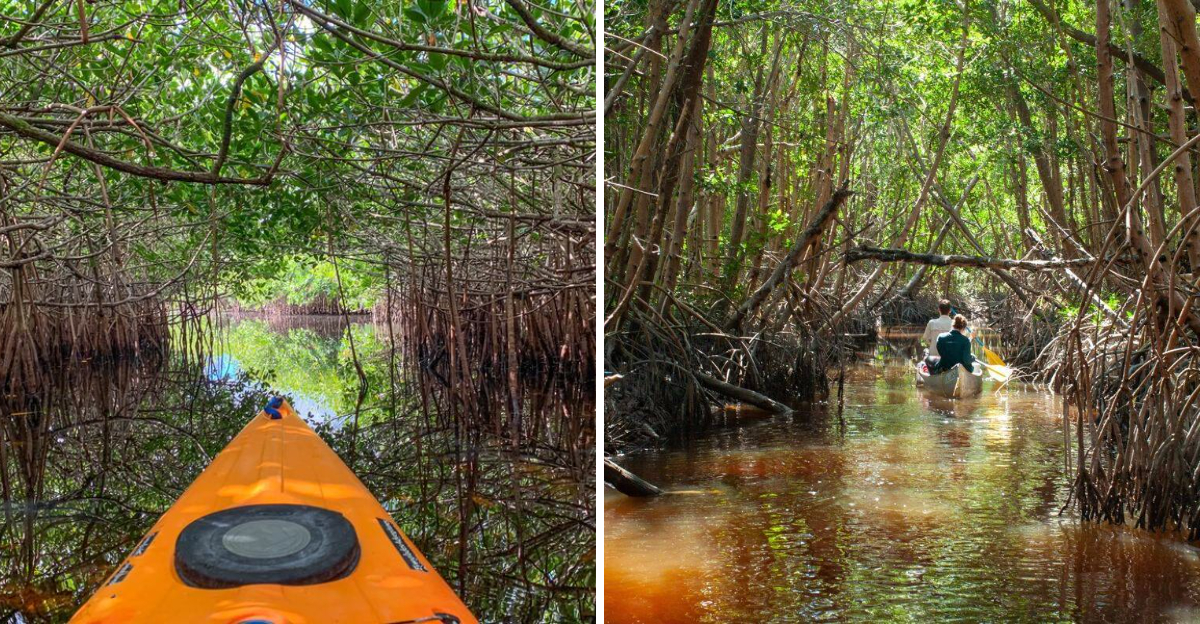
Hidden within Cocoa Beach’s calm waterways lies one of Florida’s best-kept secrets — the Thousand Islands Mangrove Tunnels. Here, winding roots weave together to form living archways above glassy blue channels, creating a world that feels far removed from the bustle of the coast.
Whether you’re chasing adventure, hoping to spot wildlife, or simply craving a peaceful escape from the crowds, this tucked-away paradise delivers an experience you’ll never forget.
A Hidden Gem Along Florida’s Space Coast
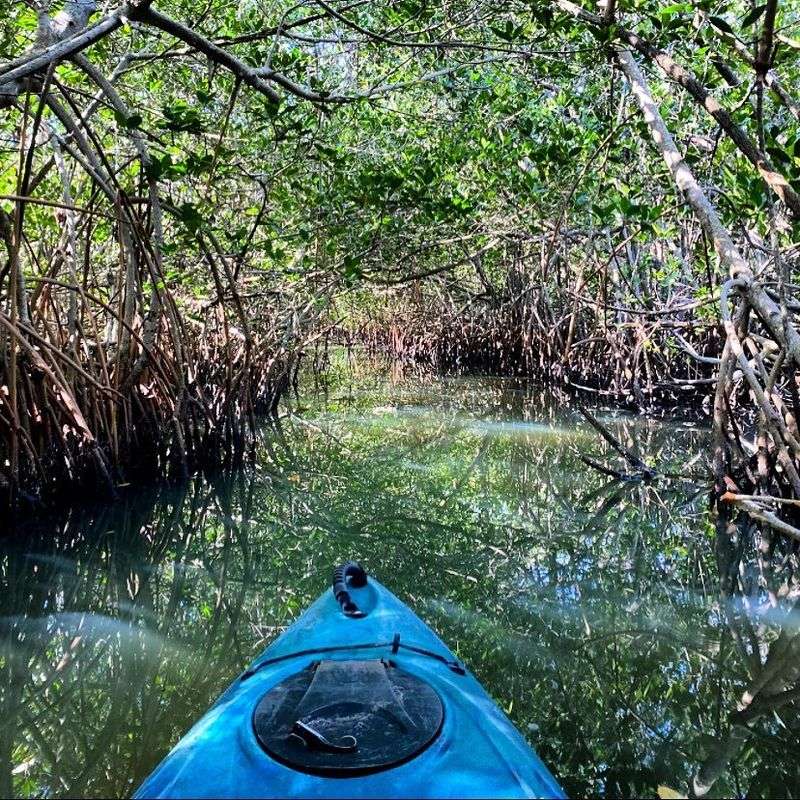
While everyone else fights for beach towel real estate, you could be gliding through nature’s secret corridors just minutes away.
The Thousand Islands aren’t actual islands in the traditional sense—they’re clusters of mangrove formations creating a watery wonderland.
Located near Cocoa Beach, this spot remains blissfully under the radar. Most visitors zoom past on their way to theme parks, completely unaware they’re missing one of Florida’s coolest natural attractions that doesn’t charge admission or require standing in line.
Nature’s Secret Passage: Inside The Mangrove Maze

Paddling into the tunnels feels like entering another dimension where sunlight filters through tangled branches overhead. The mangroves create natural archways that twist and turn, making every corner reveal something unexpected.
Water reflects the greenery like a mirror, doubling the magic surrounding you. Some passages are wide enough for group tours, while others narrow to single-file routes where branches practically high-five your head.
Navigation becomes an adventure itself as you choose which mysterious pathway to explore next through this living labyrinth.
A Haven For Wildlife Lovers

Birdwatchers, grab your binoculars—this place is basically an all-you-can-spot buffet of feathered friends. Herons strike poses like runway models, while egrets strut through shallow waters hunting breakfast.
Manatees occasionally make guest appearances, especially during cooler months when they seek warmer waters. Dolphins sometimes cruise through connecting channels, and if you’re lucky, you might spot a roseate spoonbill showing off its cotton-candy-colored plumage.
Fish dart beneath your paddle, and crabs scuttle along exposed roots during low tide.
Kayak, Paddleboard, Or Guided Tour — Choose Your Adventure
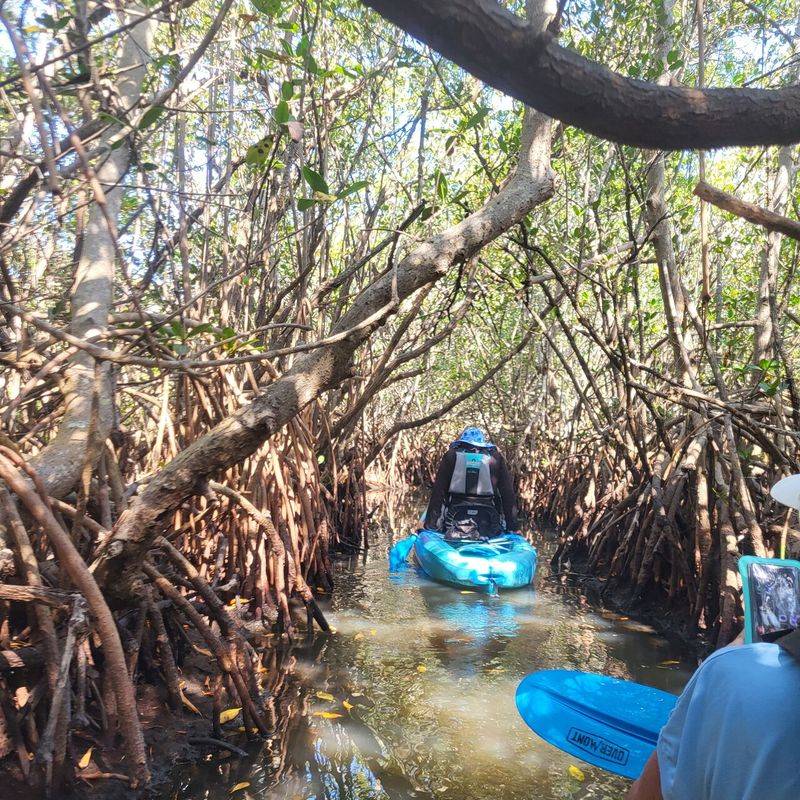
Solo explorers can rent kayaks or paddleboards from nearby outfitters and chart their own course through the tunnels. First-timers shouldn’t stress—the waters stay calm and shallow, making navigation pretty forgiving even for beginners.
Guided tours offer insider knowledge about the ecosystem plus guarantee you won’t accidentally paddle to Orlando. Some companies provide clear-bottom kayaks for bonus underwater viewing.
Stand-up paddleboarders get a different perspective, standing tall enough to peer over mangrove walls into hidden pockets of wilderness.
When To Go: Timing Your Tunnel Trip Just Right
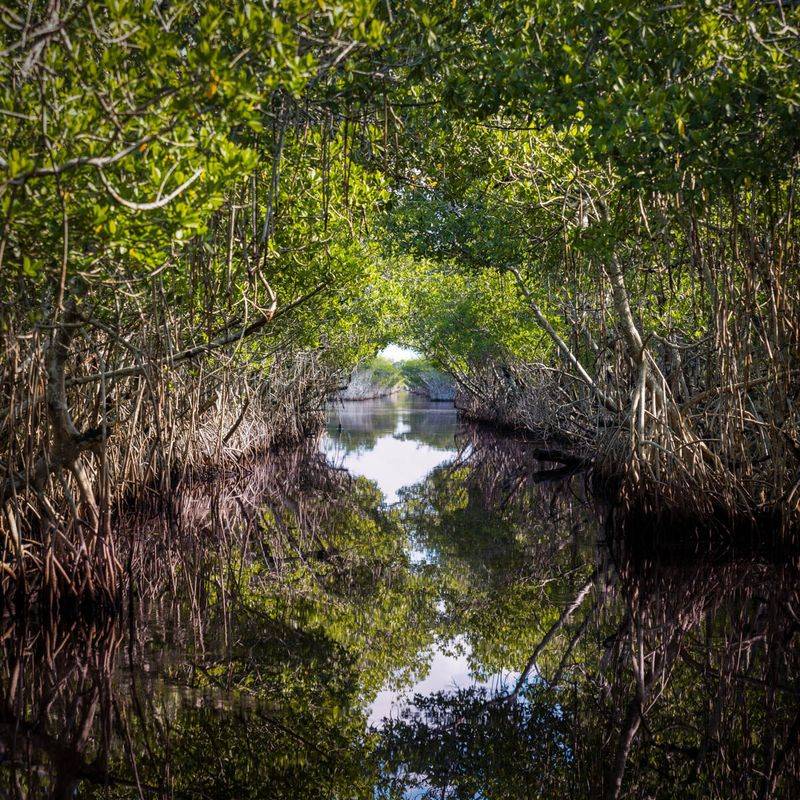
Early morning paddlers catch the best wildlife action when animals are most active and temperatures stay comfortable. Midday sun can turn the tunnels into a sweat factory, though the shade provides some relief.
Winter months from November through March offer perfect weather without summer’s scorching heat or afternoon thunderstorms.
Check tide schedules before heading out—low tide makes some passages trickier to navigate, while high tide opens up more route options. Weekdays mean fewer crowds and a more peaceful experience overall.
The Science Behind The Mangroves
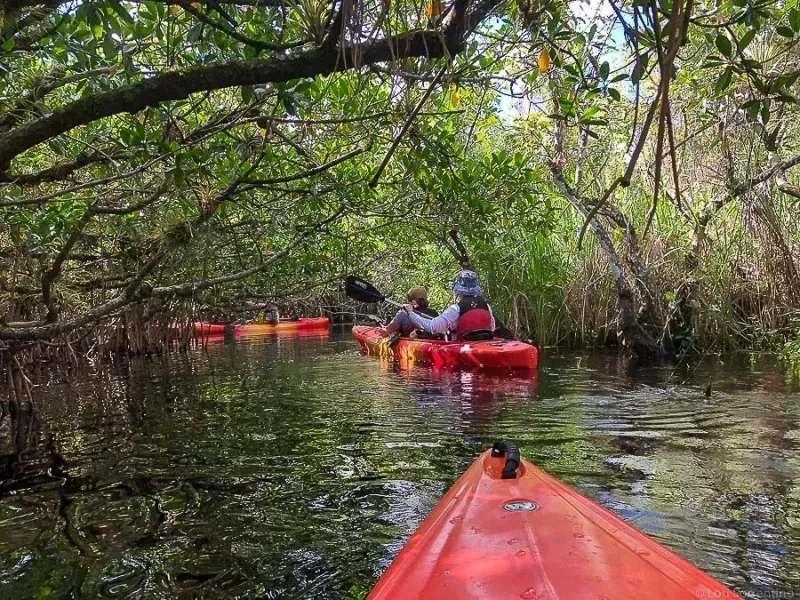
Mangroves aren’t just pretty faces—they’re environmental superheroes working overtime. Their root systems filter pollutants from water while preventing coastal erosion better than any man-made solution.
These salt-tolerant trees create nurseries where baby fish grow up protected from predators.
Mangroves also store massive amounts of carbon, fighting climate change one root at a time. Their tangled roots stabilize shorelines during hurricanes, protecting inland areas from storm surge. Understanding their importance makes paddling through them even more meaningful.
More Than A Paddle: The Thousand Islands’ Ecological Story
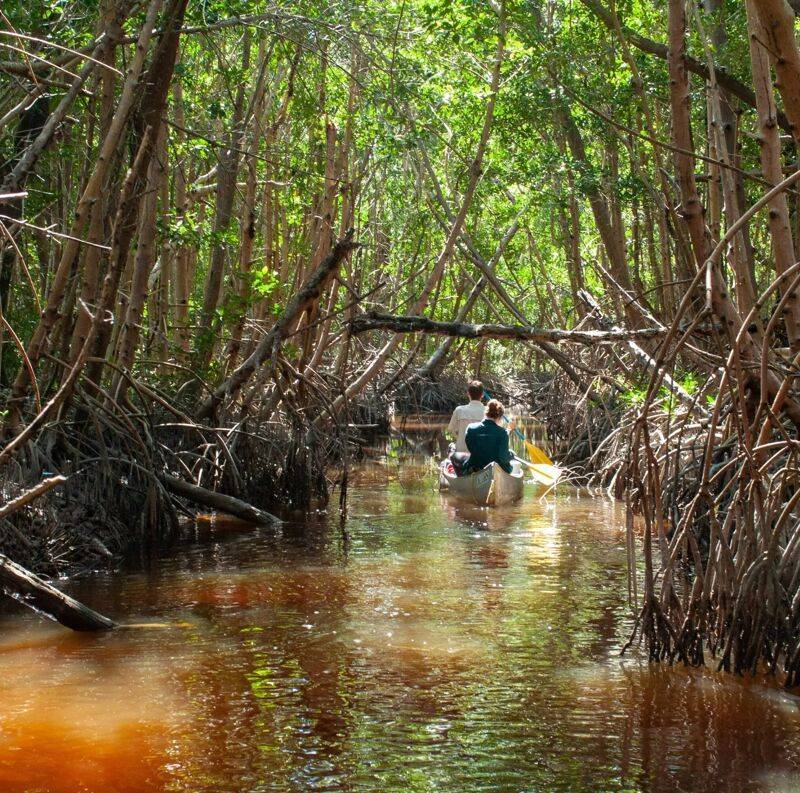
This entire ecosystem exists because freshwater from the Indian River Lagoon mixes with saltwater from the Atlantic Ocean. The blend creates brackish conditions where mangroves absolutely thrive.
Conservation efforts protect this fragile habitat from development pressures constantly threatening Florida’s coastline. Local organizations work tirelessly removing invasive species and monitoring water quality.
When you visit, you’re witnessing successful environmental preservation in action. Your presence also supports the argument that protected natural areas have value beyond just dollar signs.
Plan Your Visit: How To Find Florida’s Hidden Tunnel
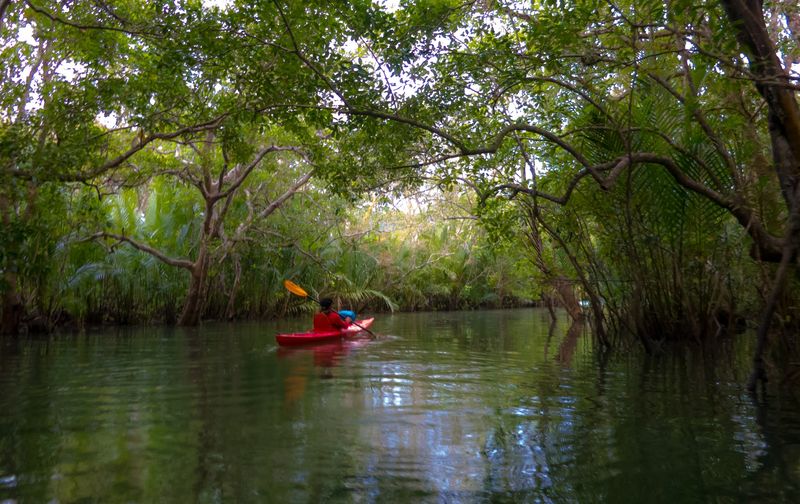
The main launch point sits near the Thousand Islands Conservation Area off State Road 3 in Cocoa Beach. Several kayak rental companies operate nearby, offering equipment and helpful route maps.
Bring sunscreen, water, and waterproof bags for phones and cameras—trust me, you’ll want photographic evidence of this adventure. Wear clothes you don’t mind getting wet and water shoes for easy launching.
Most paddlers complete the basic loop in two to three hours, though you could easily spend an entire day exploring every nook and cranny.
